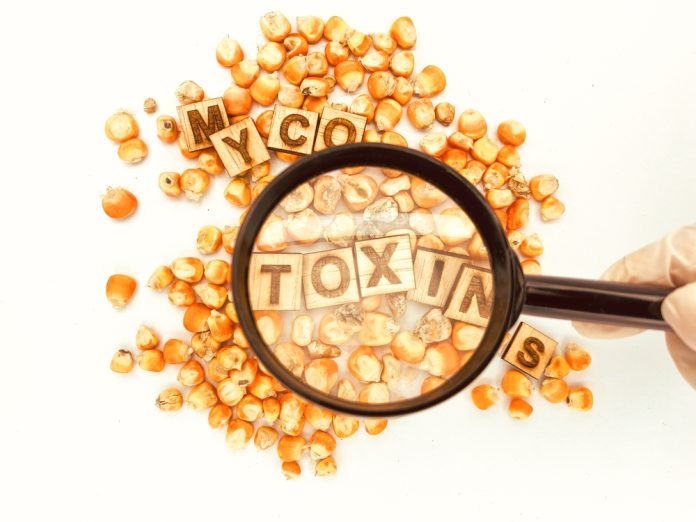As climate change accelerates, an often-overlooked threat to food safety is gaining ground: mycotoxins.
These toxic compounds, produced by fungi, are contaminating staple crops at an increasing rate due to rising temperatures and shifting weather patterns.
Found in cereals, grains, and other food products, mycotoxins pose significant risks to human health, potentially leading to organ damage, immune suppression, and even cancer.
Alarmingly, these toxins are resistant to common food preparation methods, making them difficult to detect and remove.
The European Environment Agency (EEA) has raised concerns about the growing prevalence of mycotoxin contamination, emphasising the urgent need for coordinated action.
As the climate crisis deepens, mitigating this hidden danger requires a comprehensive approach involving research, policy reforms, and agricultural innovation.
Climate change and rising mycotoxin risks
Climate change is intensifying the spread of mycotoxins across Europe. Warmer temperatures, increased humidity, and shifting weather patterns create ideal conditions for fungi to thrive and produce these harmful toxins.
The EEA warns that rising temperatures and extreme weather events are exacerbating the problem, with fungal contamination becoming more prevalent in staple crops like wheat, maize, and barley.
Flooding, soil erosion, and excessive rainfall contribute to the movement of mycotoxins from contaminated soil into water sources, increasing human exposure through drinking water.
At the same time, drought conditions weaken plants, making them more susceptible to fungal infections, further heightening contamination risks.
Health impacts of mycotoxin exposure
Mycotoxins pose a serious health threat, particularly to vulnerable groups such as infants, young children, pregnant women, and agricultural workers.
Exposure to mycotoxins can result in:
- Hormonal disruption – Interfering with normal bodily functions
- Organ damage – Affecting the liver and kidneys
- Weakened immune system – Increasing susceptibility to infections
- Reproductive risks – Higher risk of miscarriage and foetal abnormalities
- Carcinogenic effects – Some mycotoxins are linked to increased cancer risks
According to the European chemical human biomonitoring project (HBM4EU), around 14% of European adults are exposed to deoxynivalenol (DON), a mycotoxin frequently found in cereals, at levels deemed harmful to human health.
Contamination occurs primarily through food consumption, as washing or cooking does not effectively remove mycotoxins.
Additionally, inhalation of contaminated dust or absorption through the skin can further increase exposure risks, particularly for those working in agriculture and food processing industries.
Economic and agricultural consequences
Beyond health risks, mycotoxin contamination has significant economic and agricultural impacts. Reduced crop yields due to fungal infections threaten food security and increase production costs.
Farmers may be forced to use higher amounts of fungicides to combat these infections, raising concerns over antifungal resistance.
If fungi develop resistance to treatments, it could lead to more difficult-to-treat infections in both humans and animals, creating further public health challenges.
A coordinated European approach to combat mycotoxins
Addressing mycotoxin risks requires a multi-faceted strategy integrating food safety policies, agricultural innovation, and climate adaptation measures.
The European Union’s ‘One Health’ approach recognises the interconnection between human, animal, and environmental health, promoting coordinated action to reduce contamination risks.
Key measures to tackle mycotoxin exposure include:
- Enhanced monitoring: Expanding surveillance efforts to track mycotoxin levels in food, water, and animal feed.
- Crop resilience: Developing and breeding crops with natural resistance to fungal infections.
- Sustainable farming practices: Implementing crop rotation, soil regeneration, and biological controls to reduce fungal spread.
- Early warning systems: Using predictive modelling and environmental monitoring to identify high-risk areas before contamination occurs.
- Public awareness campaigns: Educating farmers, food producers, and consumers on mycotoxin risks and mitigation strategies.
As climate change accelerates, the risk of mycotoxin contamination will continue to rise. European nations must work together to implement proactive solutions that protect food safety, public health, and agricultural sustainability.
Through research, policy advancements, and sustainable practices, the fight against mycotoxins can be strengthened, ensuring a safer food system for future generations.









